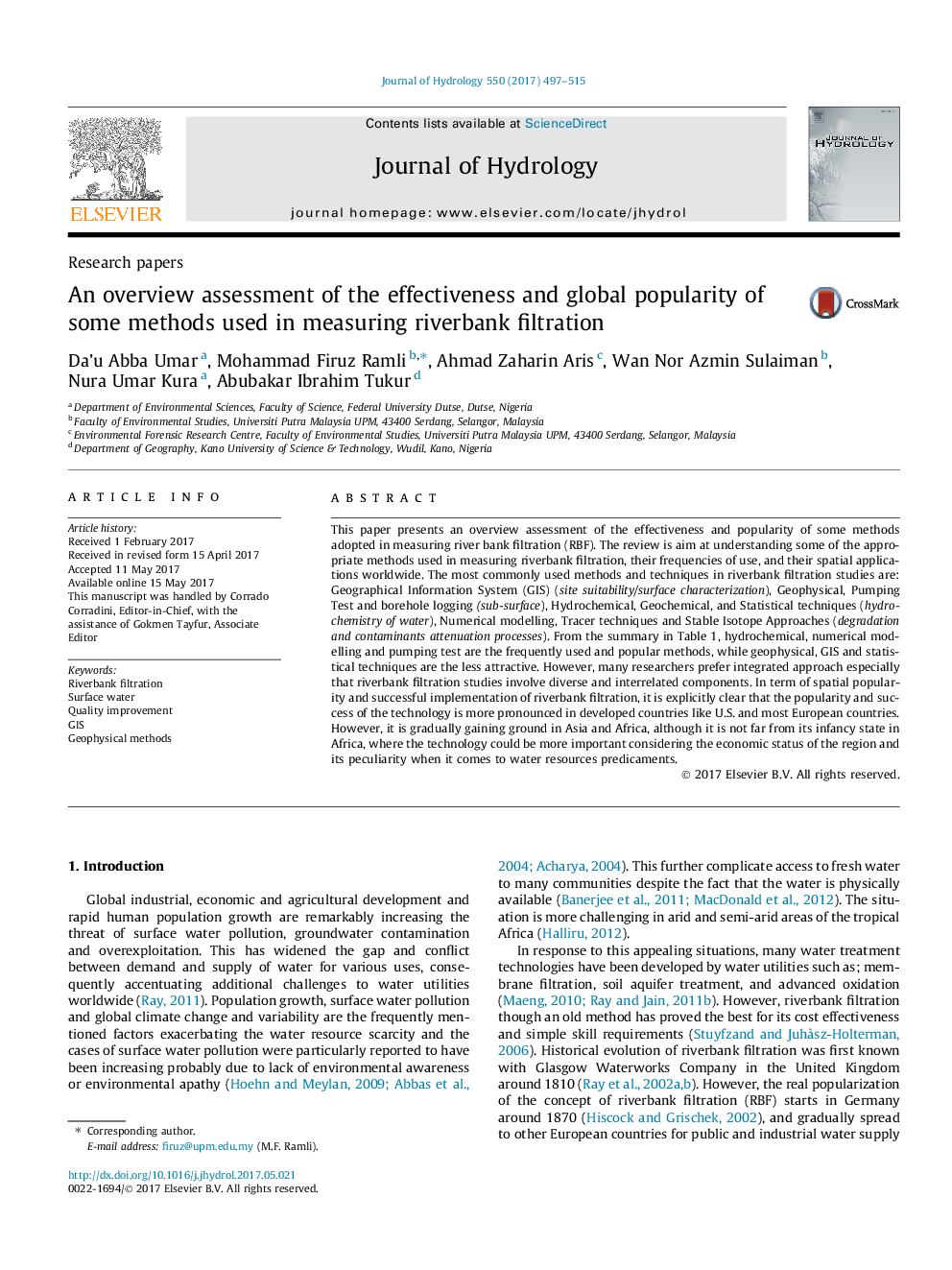| Article ID | Journal | Published Year | Pages | File Type |
|---|---|---|---|---|
| 5770772 | Journal of Hydrology | 2017 | 19 Pages |
Abstract
This paper presents an overview assessment of the effectiveness and popularity of some methods adopted in measuring river bank filtration (RBF). The review is aim at understanding some of the appropriate methods used in measuring riverbank filtration, their frequencies of use, and their spatial applications worldwide. The most commonly used methods and techniques in riverbank filtration studies are: Geographical Information System (GIS) (site suitability/surface characterization), Geophysical, Pumping Test and borehole logging (sub-surface), Hydrochemical, Geochemical, and Statistical techniques (hydrochemistry of water), Numerical modelling, Tracer techniques and Stable Isotope Approaches (degradation and contaminants attenuation processes). From the summary in Table 1, hydrochemical, numerical modelling and pumping test are the frequently used and popular methods, while geophysical, GIS and statistical techniques are the less attractive. However, many researchers prefer integrated approach especially that riverbank filtration studies involve diverse and interrelated components. In term of spatial popularity and successful implementation of riverbank filtration, it is explicitly clear that the popularity and success of the technology is more pronounced in developed countries like U.S. and most European countries. However, it is gradually gaining ground in Asia and Africa, although it is not far from its infancy state in Africa, where the technology could be more important considering the economic status of the region and its peculiarity when it comes to water resources predicaments.
Related Topics
Physical Sciences and Engineering
Earth and Planetary Sciences
Earth-Surface Processes
Authors
Da'u Abba Umar, Mohammad Firuz Ramli, Ahmad Zaharin Aris, Wan Nor Azmin Sulaiman, Nura Umar Kura, Abubakar Ibrahim Tukur,
